Key Takeaways
Fitness apps like Fitbit help users monitor activity, sleep, and health, offering entrepreneurs a chance to enter a market expected to surpass $25B by 2030.
Building a Fitbit-like app solves the problem of fragmented health tracking by uniting activity, nutrition, and wellness insights in one platform.
Entrepreneurs should focus on how to build an app like Fitbit with core features first, then scale with AI, telehealth integration, and IoT connectivity.
Monetization options include subscriptions, in-app purchases, and corporate wellness programs, creating multiple revenue streams for long-term business sustainability.
Challenges such as data accuracy, privacy compliance, and scalability can be overcome with the right tech stack and development strategy.
The future of fitness apps lies in AI-driven personalization, gamified AR workouts, and blockchain-secured data, making them more engaging and trustworthy for users.
JPLoft, a global fitness app development company, offers end-to-end solutions, from UX design to wearable integration, helping startups and enterprises build scalable fitness apps that rival global leaders.
Do you know that in 2024, fitness apps were downloaded 850 million times across different platforms?
In today’s digital era, fitness apps have become the go-to companions for millions who want to stay active, track progress, and build healthier lifestyles.
Among them, Fitbit stands out as a pioneer, combining wearable technology with smart analytics to transform everyday routines into measurable wellness goals. But here’s the thing, Fitbit isn’t just a fitness app; it’s a business model that shows how technology, data, and user engagement can create massive opportunities.
For entrepreneurs and investors, building an app like Fitbit means tapping into a global market projected to reach billions in value within the next decade. By offering activity tracking, personalized insights, and integration with wearables, such apps not only drive user retention but also open multiple monetization streams.
This blog explores the steps, features, costs, and strategies involved in developing a fitness app like Fitbit, helping you evaluate its potential and plan for success.
An Overview of the Fitbit App
Fitbit is a leading fitness and wellness app designed to help users track, manage, and improve their health. It syncs with Fitbit wearables to monitor steps, heart rate, calories burned, workouts, and sleep patterns.
The app also provides personalized insights, guided programs, and goal-setting features that encourage healthier habits. Users can log nutrition, hydration, and weight, while challenges and leaderboards add a social and motivational element.
With premium subscriptions, Fitbit offers advanced analytics, stress management tools, and health reports. Overall, it’s an all-in-one platform for activity tracking, fitness coaching, and holistic wellness management, making it popular among health-conscious users.
Here is the list of certain fitness app market statistics to check.
-
The global market for the fitness app was valued at US $12.1 billion in 2024, and is projected to reach US $25.8 billion by 2030, growing at a CAGR of 13.5% from 2024 to 2030.
-
Additionally, the U.S fitness apps market size was estimated at USD 4.23 billion in 2024, and is projected to reach USD 10.10 billion by 2033, that is growing at a CAGR of 10% from 2025 to 2033.
-
When it comes to the Business of Apps, there are 38 million people who use Fitbit once a week, and 128 million have registered to use the app.
-
Here, the global fitness tracker market is projected to reach $187.2 billion by 2032, growing at a CAGR of 17.3%.
Proceeding with the market stats, let's get ahead with the working process of the Fitbit app, below.
How Does an App like Fitbit Work?
When you start an online fitness business, you should have a broad idea related to how it works. Especially when it comes to apps, learning about the complete working procedure plays a vital role. It will help you to decide the user persona and user journey mapping.
Let’s check out the Fitbit working process below.
Step 1: Download and Install
Open the App Store or Google Play, search for the app, and tap Install. First launch will show a brief intro and a request to sign up or log in.
Step 2: Create an Account and Permit Permissions
Sign up by email, phone, or SSO. Enter age, height, weight, and goals. Permit Bluetooth, motion/activity, location (for GPS runs), notifications, and Apple Health or Google Fit sync.
Step 3: Pair Your Device and Complete Onboarding
Turn on the tracker, turn on Bluetooth, and go through the on-screen pairing instructions. A firmware update may be prompted through the app. Select targets such as steps, zone minutes, sleep hours, and reminders to move.
Step 4: Wear all Day, Automatically Syncs in the Background
The wearable tracks steps, heart rate, sleep, and workouts. Launch the app to glance at a live dashboard; in the background, it syncs every few seconds, displays trends, and reminds users when goals are near.
Step 5: Begin Workouts and Record Health Information
The users can press start for runs, walks, bike rides, or strength training. GPS tracks their path, heart-rate zones regulate effort, and calories tick up in real time. Record water, food, weight, and meditation sessions to complete the snapshot.
Step 6: Gain Insights, Compare, and Control Privacy
See daily/weekly observations, streaks, badges, and recovery advice. Challenge friends, modify goals, and schedule Do Not Disturb for peaceful hours. Handle data export/delete, integrated apps, and subscription choices for extended reports.
Pursuing the working process of how a fitness app like Fitbit works, let’s continue with the reasons to consider behind creating them, in the section below.
Why Create an App Like Fitbit?
Before you reach “how,” let’s learn about “Why”. Creating a mobile app can be tricky; however, all you need to know is the purpose of building it.
Let’s check out the following reasons for building an app like Fitbit, below.
1. Increased Demand for Digital Fitness
The fitness app market globally is growing at a fast pace and is expected to reach US$25.8 billion by 2030. Therefore, creating a fitness app like Fitbit allows businesses to penetrate this emerging digital health market where consumers anticipate mobile-first options.
2. User Interaction Through Health Tracking
Users adore apps that provide them with daily information on their steps, heart rate, calories, and sleep. Through the development of a Fitbit-like fitness tracking app, businesses are able to provide motivating features that generate long-term user loyalty. Knowing how to develop a fitness app like Fitbit means greater retention through data-driven motivation.
3. Monetization Opportunities
From paid subscriptions to in-app payments and wearables integrations, a fitness app creates multiple revenue streams. For entrepreneurs, investigating how to build an app like Fitbit involves more than health technology; it's all about scalable monetization models that keep up with usage.
4. Personalized Wellness Experiences
Today's users do not merely need raw data; they require individualized insights and directed programs. By creating a Fitbit-type application, you're creating an individualized wellness coach that adjusts according to lifestyle decisions. Knowledge of how to create a Fitbit-type app guarantees features such as individualized challenges, goals, and insights.
5. Brand Authority in the Health Industry
Developing an app like Fitbit creates trust in the wellness and fitness industry. Brands that create such apps are viewed as pioneers in health tech innovation. With the knowledge of how to create an app like Fitbit, brands are able to tap into user trust and business recognition.
6. Integration into Larger Ecosystem
Fitbit has also succeeded because it can integrate with smartwatches, IoT devices, and applications such as Apple Health or Google Fit. Creating a similar app guarantees that your solution is not stand-alone but within a connected environment. That's why learning how to create a Fitbit clone app is very important for scalability and future uptake.
Connecting with the leading mobile app development company in the UK can help you to guide in learning the current patterns in the competitive market.
Features to Include in an App like Fitbit
Many fitness app features can help you begin with your dream app. Let’s discuss them all below.
1] Activity Tracking
Monitors steps, distance traveled, and calories burned during the day. This provides users with a clear indication of how active they are. It also assists in accumulating daily streaks and encourages them to move more regularly.
2] Heart Rate Monitoring
Continuously tracks the heart rate at rest and during exercise. Users can view trends, intensity, and identify abnormal spikes. It's an essential function for monitoring cardiovascular well-being and enhancing fitness regimen safely.
3] Sleep Tracking
Tracks sleep time, quality, and phases like light, deep, and REM sleep. Offers insights to enhance bedtime routines and facilitate better recovery. This assists users in comprehending how sleep affects their overall health.
4] Workout Modes
Supports a multitude of workouts ranging from running, cycling, yoga, and strength training. Every mode has specific data and performance feedback. It makes the app diverse and helpful to individuals with varying health objectives.
5] Goal Setting & Progress Reports
Users can also define personal fitness goals such as daily steps, active minutes, or calorie intake. Progress is reflected through weekly or monthly reports with visual graphs. This makes users accountable and encourages them towards long-term accomplishments.
6] Nutrition & Hydration Logging
Allows users to record meals, track calories, and monitor water consumption. With the combination of nutrition and activity input, users have a comprehensive picture of their health. It promotes a balanced diet and regular drinking habits.
7] Social Challenges & Leaderboards
Incentivizes users to challenge friends, participate in group challenges, and achieve milestones. Leaderboards provide a gamified feature that increases motivation. This social component turns fitness into a fun, interactive activity rather than a chore.
8] Notifications & Reminders
Provides timely reminders to move, hydrate, or begin workouts. Customizable notifications avoid over-notification and keep users engaged. It helps healthy habits develop without intrusiveness.
Let’s check out the summary of features to use in the Fitbit app, below.
|
Feature |
Description |
|
Activity Tracking |
Monitors daily steps, distance, and calories for better awareness. |
|
Heart Rate Monitoring |
Provides real-time and resting heart rate trends to track health. |
|
Sleep Tracking |
Analyzes sleep patterns and gives insights to improve rest. |
|
Workout Modes |
Offers multiple exercise types with detailed performance data. |
|
Goal Setting & Reports |
Lets users set targets and view progress through charts and reports. |
|
Nutrition & Hydration |
Logs meals and water intake for holistic wellness tracking. |
|
Social Challenges |
Adds fun with competitions, leaderboards, and group motivation. |
|
Notifications & Reminders |
Keeps users on track with timely and customizable health nudges. |
Now, as you are ready to create an app like Fitbit, let’s move ahead with the process to create it in the following section.
How to Develop an App like Fitbit?
You can create a fitness app by following the right set of strategies. These steps all begin with the market study, evaluating the core set of features, and then end with app launch and maintenance.
Let’s evaluate all the steps to build an app like Fitbit, below.
Step 1: Nail the Problem, Audience, and Positioning
Start with user research: interviews, competitor teardowns, and store-review mining to learn what real people love and hate.
Define your (Ideal Customer Profile) ICPs, busy professionals, runners, new parents, seniors, then map use cases for each.
Pick two signature outcomes (better sleep, zone minutes, weight management) to anchor your story. Build a feature-priority matrix so you don’t chase everything. Set success metrics early: activation rate, day-7 retention, MAU, and subscription conversion.
Step 2: Scope the MVP and Write Exact User Journeys
Outline the day-one flows: onboarding, permissions, pairing a device, daily dashboard, starting a workout, and viewing trends.
Document edge cases like lost Bluetooth connection, denied permissions, or low battery on the wearable. Building a minimal Viable product (MVP), before the actual version, for creating a fitness app like Fitbit, is important to optimize resources.
Define the data you’ll show on each screen and the thresholds for nudges. Keep the first release crisp: activity, HR, sleep, goals, and a simple insights feed. Everything else waits for v2.
Step 3: Design UX that Reduces Friction
Design a 60-second onboarding: (SIngal Sign On) SSO, basic profile, goals, and pairing in one glide.
To start with the fitness app design, you should use readable tiles, large tap targets, and instant feedback on syncs.
For the mobile app design, you should visualize progress with clear rings/bars and weekly trend cards; don’t drown users in numbers. Make notifications helpful, not noisy, time them around routines, not at random. Add privacy controls up front: show exactly what’s collected and why.
Step 4: Plan Data Architecture and Algorithms
When you create a Fibit clone, it's important to adopt a time-series mindset: high-frequency sensor data in cold storage, aggregated metrics in hot storage.
Normalize raw accelerometer, optical HR, and GPS streams; stamp with device ID, units, and confidence. Implement filters (low-pass, median) and step/peak detection; calibrate per device.
Derive features (RHR, HR zones, cadence) and compute sleep stages using probabilistic or ML models. Keep all transformations reproducible and versioned.
Step 5: Integrate Devices and Platform Health APIs
Use Bluetooth LE (low energy) for pairing, bonding, and background sync; implement delta syncing to ship only changes. Support firmware updates and handle reconnection gracefully.
Start with Apple HealthKit and Google Fit for baseline interoperability; add direct integrations for popular wearables when possible.
Respect platform rules for background tasks, battery use, and location accuracy. Log device-level diagnostics so support can actually debug. This step will improve the user experience and can increase the overall brand’s ability to lead the competition.
Step 6: Build the Backend for Scale and Safety
Choose a cloud stack with event queues (Kafka/SQS), workers for signal processing, and a time-series store (TimescaleDB/Influx/ClickHouse). Here, you should select the mobile app tech stack wisely so that it can provide you with engaging support for the integrated features.
Expose a clean GraphQL/REST API with pagination and ETags. Encrypt in transit and at rest, rotate keys, and run periodic privacy audits.
Add rate limits, anomaly checks, and integrity guards to catch spoofed data. Set up feature flags so you can ship gradually and roll back fast. Here’s a table to check out for the technology stack to use in creating an app ike Fitbit.
|
Layer |
Technologies / Tools |
Purpose |
|
Frontend (Mobile App) |
Swift (iOS), Kotlin (Android), React Native / Flutter |
Build responsive, cross-platform mobile apps |
|
Backend |
Node.js, Django, Ruby on Rails, Laravel |
Handle APIs, user management, and business logic |
|
Database |
PostgreSQL, MongoDB, MySQL |
Store user profiles, logs, and fitness data |
|
Cloud & Hosting |
AWS, Google Cloud, Microsoft Azure |
Scalable infrastructure and storage |
|
Wearable & Sensors |
Bluetooth Low Energy (BLE), Google Fit APIs, Apple HealthKit |
Connect and sync wearable devices & sensors |
|
Analytics |
Firebase Analytics, Mixpanel, Amplitude |
Track user behavior and app performance |
|
Notifications |
Firebase Cloud Messaging (FCM), Apple Push Notification Service (APNs) |
Send reminders, alerts, and motivational nudges |
|
Security |
OAuth 2.0, JWT, SSL/TLS, End-to-End Encryption |
Ensure data privacy and secure user information |
Step 7: Ship the Mobile Apps with Quality Gates
Pick native (Swift/Kotlin) for tight sensor and background handling, or high-quality cross-platform if your device work is light. Implement offline-first caches, optimistic UI, and conflict resolution on sync.
You can submit the app on the App Store or publish an app on the Play Store after checking out the guidelines for both platforms.
Add crash reporting, performance monitoring, and strict permission handling. Write unit tests for parsers and calculators, UI tests for core flows, and soak tests for 24-hour recording. Beta with a small cohort and fix paper-cut bugs before launch.
Step 8: Engagement, Monetization, and Growth Loops
Turn raw metrics into simple, actionable insights: “You slept 45 minutes less than your 7-day average; try a 10-minute wind-down.” Use goals, streaks, challenges, and badges sparingly, earned, not spammed.
Monetize with a clear premium tier: advanced analytics, guided programs, readiness scores, and exportable reports. Invest in ASO (keywords, screenshots with real metrics, concise value props) and lifecycle CRM (onboarding tips, weekly recaps).
Measure what matters: day-1/7/30 retention, notification CTR, feature adoption, and LTV/CAC. Also, you should connect with the mobile app maintenance services to improve the chances of your app succeeding and mitigate the errors and bugs regularly.
After checking out the complete list of steps to make a fitness app like Fitbit, let’s proceed with the implementation and use of AI for the development process, in the section below.
Use of AI in Creating an App like Fitbit
The implementation of AI in fitness apps can help improve the personalization scope and can further lead to better user retention and engagement.
Let’s find out the use of AI for building a Fitbit clone, below.
► Denoise Sensor Data and Identify Activities
Begin by filtering accelerometer, gyroscope, and optical HR streams and removing outliers. Train models for activity classification, such as walk, run, cycle, and still.
Deploy on-device inference for real-time feedback and reduced latency. Store raw and derived features so that you can retrain without re-collecting data.
► Transform Signals into Accurate Health Metrics
To create an app like Fitbit, you can apply ML to normalize step counts, interpolate distance from stride models, and filter out heart-rate spikes.
Calibrate to each user by age, sex, height, and resting HR to enhance calories and zone minutes. Ensemble techniques assist with generalization across phones and wearables. Cross-validate against small lab datasets to avoid drift.
► Sleep and Stress Insights
With the help of integrating AI, you can create a sequence model to predict sleep stages from motion and HRV. Include circadian characteristics such as learned bed and wake windows.
For stress analysis, you can compute HRV features and combine them with daily load to generate simple, actionable scores. Always expose confidence levels so that users will trust the insight.
► Personalization and Coaching
You can build a fitness app like Fitbit, and include AI, helpful to train recommendation models to propose goals, exercises, and rest advice for recent behavior and long-term patterns.
You should begin with rules and add bandits or reinforcement learning to dynamically change nudges and timing. Make explanations transparent so users can know why a suggestion today versus last week.
► Anomaly Detection and Safety Nets
Utilize unsupervised detectors to raise the alarm on anomalous patterns: unexpected HR spikes when resting, step collapse, or GPS anomalies.
Fire up soft checks or nudges rather than alarms. These same guards detect spoofed or corrupted data, enhancing the quality of your analytics and user trust.
► Engagement, Churn, and Pricing Models
Forecast day-7 and day-30 retention, then customize lifecycles: reminders, challenges, and premium trials that are appropriate to each segment.
Weight features on lift on adherence and recovery, not ego metrics. Experiment with pricing and paywalls using uplift modeling so that offers feel reasonable and convert without damaging loyalty.
Pursuing the use of AI in Fitbit-like app development, now, you can analyze the complete cost in the following section.
Let's find out the overall costs in the following section.
Cost to Create an App like Fitbit
Here, the cost to develop an app like Fitbit can vary from $20,000 to $100,000+; further, it depends on multiple factors, such as the complexity of features, complex designs, and more.
The cost to build a fitness app also fluctuates based on whether you choose native or cross-platform development, the type of wearable integrations required, and the sophistication of AI-driven insights you plan to add. Backend infrastructure, cloud hosting, and third-party APIs for health tracking can also significantly impact expenses.
Finally, ongoing costs such as app maintenance, updates, security compliance, and premium feature enhancements also contribute to the overall budget.
Let’s check out the table below for understanding the cost parameters.
|
Factor |
Description |
Estimated Cost |
|
App Complexity |
Basic tracking vs. advanced features like heart-rate monitoring, AI insights, and real-time sync. |
$20,000 – $40,000 |
|
UI/UX Design |
Simple layouts cost less; custom, interactive, or premium designs raise costs. |
$5,000 – $15,000 |
|
Platform Choice |
Building for Android or iOS only costs less; cross-platform development doubles testing and optimization needs. |
$10,000 – $20,000 |
|
Backend & APIs |
Cloud setup, database, and third-party API integration for wearable sync and analytics. |
$8,000 – $18,000 |
|
AI & Advanced Analytics |
Personalized insights, sleep stage detection, and predictive health models. |
$12,000 – $25,000 |
|
Wearable Integration |
Bluetooth LE, Apple HealthKit, Google Fit, or direct device sync. |
$5,000 – $12,000 |
|
Testing & Quality Assurance |
Includes performance, security, and device compatibility testing. |
$3,000 – $8,000 |
|
App Maintenance & Updates |
Continuous improvements, bug fixes, and feature enhancements post-launch. |
$2,000 – $7,000 (annual/ongoing) |
|
Total Estimated Cost |
The combined development cost considers all major factors. |
$20,000 – $100,000 |
After learning about the cost to build an app like Fitbit, let’s proceed to learn about the monetization strategies in detail, below.
How Does an App like Fitbit Earn Money?
When you have decided to develop an app like Fitbit, it is essential to check out the diversified mobile app monetization strategies.These strategies not only open the ways to earn money, however, it also help in deciding the complete business model to adopt under this scenario.
Let’s check them out below.
A] Freemium Model with Premium Subscriptions
Free basic features and charge for premium features like advanced analytics, guided workouts, or customized health reports. While building a fitness app like Fitbit, the freemium model will help connect with potential users and then engage them with the brand.
This will enable you to have a huge user base initially and then convert a percentage of that into paid subscribers. Fitbit Premium is one such example, giving deeper insights and personalized programs at a monthly or yearly subscription cost.
B] In-App Purchases
Fitness apps can monetize digital add-ons like personalized workout routines, diet plans, or meditation sets. This is one of the engaging fitness app monetization strategies helpful to connect with potential users who are genuinely interested in fitness apps.
Users can pay for ad-hoc features, challenges, or even virtual items like rewards and badges. That introduces the flexibility for users who do not wish to have a subscription but are willing to pay for add-ons.
C] Affiliate Marketing & Partnerships
Collaborating with wellness brands, gyms, nutrition firms, or sports equipment manufacturers can provide affiliate revenue streams.
Additionally, you can develop an app like Fitbit by partnering with the products that can be promoted by the app, and discounts may be offered, earning commissions from each sale generated through the app environment. This applies particularly to wearables, supplements, and health services.
D] Corporate Wellness Programs
Most businesses spend on employee wellness to improve productivity and lower the cost of healthcare.
A Fitbit-like app can collaborate with organizations to offer workforce-level access, including custom dashboards and bulk subscriptions. This B2B model ensures constant revenue streams outside of individual consumers.
E] Data-Driven Insights for Research
With anonymization and user permission, aggregated health information can prove useful for insurance providers, medical science, and health and fitness companies.
Selling or licensing them responsibly creates a new income stream while propelling health research. It is important to be transparent and follow regulations such as GDPR and HIPAA here.
F] Advertising & Brand Collaborations
Thoughtfully embedded ads, sponsored posts, or branded fitness challenges can yield steady revenue.
For instance, a sportswear brand may sponsor step challenges. In order to retain users, ads must be meaningful, not intrusive, and preferably related to health and wellness products.
Now, as you are ready to create an app like Fitbit, it's time to sit back and start with your fitness app idea.
However, when you initiate the process, there is are certain set of challenges that you might come across.
Yes, you might come across a diversified set of challenges while building an app like Fitbit. Overcoming these challenges is a part of achieving long-term success. Let’s switch to the following section.
Challenges to Create an App like Fitbit
There can be a certain set of challenges that your app might go through, such as a poor market study or an inappropriate user design.
Let’s check out the diversified challenges while creating a fitness app in this section.
1. Issues of Data Gathering & Processing
One of the most challenging barriers is having trustworthy tracking from wearables and phone sensors. Raw information is usually accompanied by noise, discrepancies, and holes.
Programmers require sophisticated algorithms and regular calibration to convert motion, heart rate, and GPS readings into reliable insights. One little inaccuracy can shatter users' confidence instantly.
2. Smooth Device Harmony
A fitness app must be compatible with various wearables, smartphones, and platforms. Compatibility with Apple HealthKit, Google Fit, or bespoke Bluetooth devices requires a good technical architecture.
To build an app like Fitbit, it is essential to have a smooth pairing, syncing, and background updating without consuming battery life is a multifaceted challenge that needs careful planning.
3. Privacy & Security Compliance
As fitness apps deal with sensitive health information, it is essential to protect users' privacy. Compliance with regulations such as GDPR, HIPAA, and regional data laws is essential.
Additional effort goes into creating encryption layers, secure data storage, and transparent consent mechanisms, but it's worth it if you aim to gain long-term trust.
4. User Engagement & Retention
It is simple to download an app, but it is difficult to retain users. Lacking compelling insights, personalized guidance, and game-like features, users drop off from fitness apps in weeks.
Balancing motivation without spamming users is a problem that demands intelligent UI/UX design and behavioral science approaches.
5. Excessive Development & Maintenance Costs
Developing a Fitbit-like app isn't a cost that once pays off; it entails ongoing updates, bug fixing, and feature additions. An inappropriate budget is one of the issues that you can come across to making an app like Fitbit.
AI-driven insights, cloud infrastructure, and wearable integrations are costly. Startups tend not to balance first-time investment and long-term monetization strategy well.
6. Scalability & Performance
As the user base is large, the backend needs to process huge data streams in real time. It is challenging to design a scalable architecture that provides lag-free smoothness of operation.
A slow app can infuriate users when they are doing live workouts or syncing data. Here, the low scalability and performance can lead to a major issue while building a fitness app like Fitbit.
Future Trends in Creating an App like Fitbit
The future trends can impact the Fitbit-like app development process. Whether it's about the use of AI or ML, your app can have a vast impact from the same.
Other than these trends, there are various other future trends impacting the overall development procedure of an app like Fitbit.
Let’s cover it all below.
1. AI-Driven Personalization
As you research how to develop an app similar to Fitbit, AI will have a key position. Upcoming apps will offer personalized guidance, forecast user behavior, and personalize health insights based on behavior and biometrics. This degree of personalization encourages users to stay motivated and enhances retention.
2. Telehealth and Virtual Care Integration
To develop a fitness app like Fitbit that is remarkable, incorporating telehealth capabilities is now becoming imperative. Consumers crave real-time access to nutritionists, trainers, or even doctors within the same app. Such integration connects wellness with clinical care, enhancing the value of the app.
3. Gamification and AR Workouts
In the future, fitness apps will do more than track steps through augmented reality and gamified experiences. If you are developing an app like Fitbit, incorporating AR-based challenges and immersive workout sessions will make users stay and love fitness.
4. Expanded IoT and Wearable Ecosystem
When companies venture out to develop a fitness app similar to Fitbit, they have to keep in mind IoT innovation. Upcoming apps will integrate with smart clothing, smart gym equipment, and even home appliances, providing an integrated ecosystem for complete fitness tracking.
5. Focus on Mental Wellness
Fitness apps are no longer just focused on physical activity. To create a fitness app like Fitbit, including features such as mindfulness, mood tracking, and stress management, will be vital. This provides a holistic wellness experience, not only workout tracking.
6. Blockchain for Data Security and Transparency
As privacy concerns grow, the future of developing a fitness app such as Fitbit will be blockchain technology. Users will have more control over how and where their information is stored, shared, and monetized, promoting trust and use of the app.
Partner with JPLoft and Build an App like Fitbit
With JPLoft, you can build an app like Fitbit that goes beyond step tracking for delivering a complete health and wellness solution.
As a trusted fitness app development company, JPLoft specializes in creating innovative, user-centric apps equipped with advanced features such as activity monitoring, heart rate tracking, sleep analysis, nutrition logging, and social challenges.
By combining scalable backend architecture, AI-driven insights, and seamless wearable integration, JPLoft ensures your app matches the performance of global leaders like Fitbit while offering unique differentiators. Entrepreneurs can also benefit from customized monetization models, including subscriptions, corporate wellness programs, and affiliate partnerships.
Whether you’re targeting fitness enthusiasts, healthcare providers, or lifestyle-driven communities, JPLoft helps you craft a solution that drives engagement and builds long-term value. With deep technical expertise and proven industry experience, partnering with JPLoft means transforming your idea into a high-performing app that thrives in the growing fitness app market.
Conclusion
Building an app like Fitbit requires the perfect blend of technology, user experience, and innovation. From activity tracking to AI-driven insights, these apps are transforming digital wellness into a thriving industry.
Entrepreneurs investing in this space must consider features, costs, monetization, and emerging trends like telehealth and IoT. While challenges like privacy compliance and scalability exist, the opportunities far outweigh them.
With the right partner, you can create a fitness solution that inspires millions to adopt healthier lifestyles. The future of fitness apps is bright, and now is the time to seize it.
FAQs
Start by defining target users, selecting core features, and creating an MVP. Then integrate wearables, design intuitive UX, ensure data security, and scale with AI-driven personalization.
The cost ranges from $20,000 to $100,000, depending on app complexity, features, wearable integration, AI functionalities, and long-term maintenance requirements.
Essential features include activity tracking, sleep monitoring, workout modes, nutrition logging, goal setting, notifications, social challenges, and detailed progress reports for user engagement.
They monetize through premium subscriptions, in-app purchases, affiliate partnerships, corporate wellness programs, and carefully integrated ads or brand collaborations.
Fitness apps are part of a rapidly growing global market, creating revenue opportunities, stronger brand positioning, and loyal user communities focused on health.
Challenges include accurate data tracking, seamless device integration, strict privacy compliance, user retention, high development costs, and ensuring scalability for millions of active users.





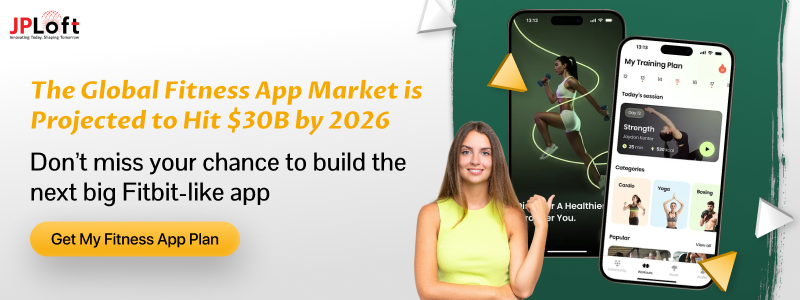
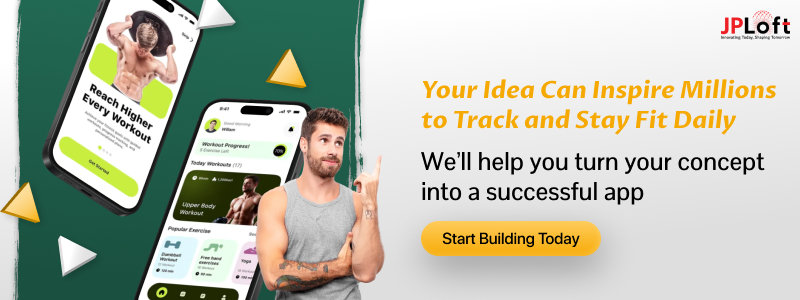

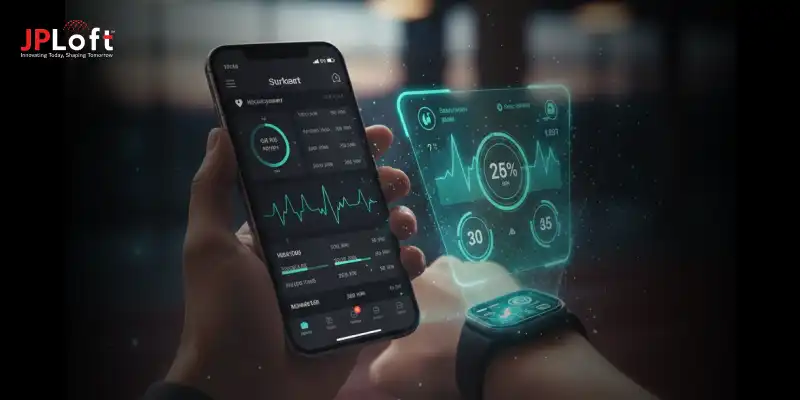
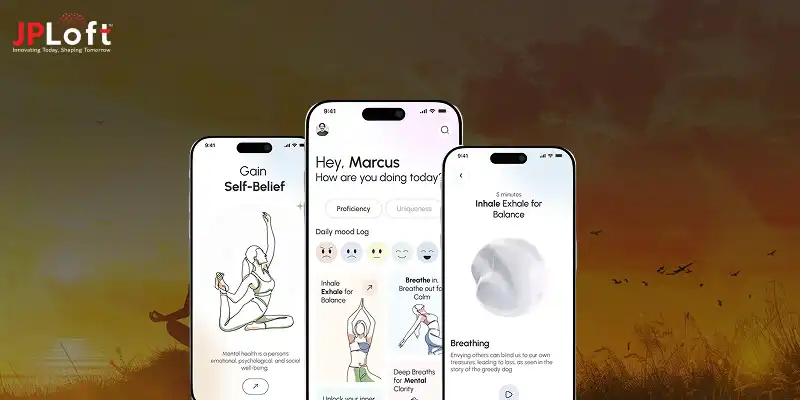
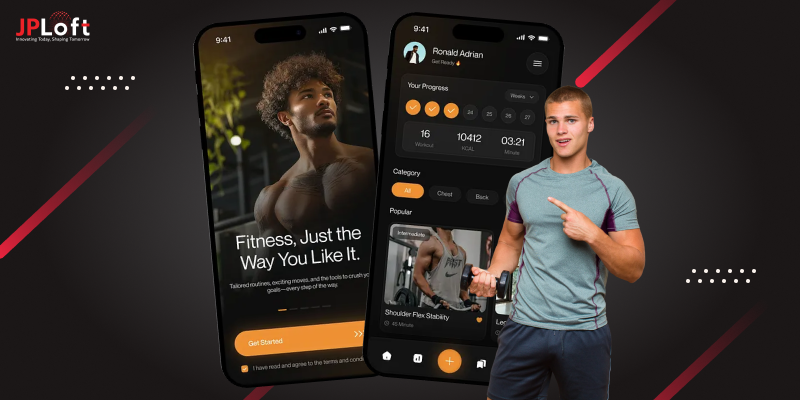


Share this blog